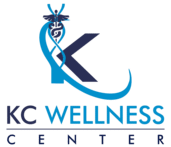
According to Susan B. Komen, women who go through menopause later in life have an increased risk of breast cancer compared to women who go through menopause earlier. It’s important to stay educated, know the symptoms, spread awareness, be supportive and learn how to tackle these new challenges during the second stage of life.
National Breast Cancer Awareness Month
Every October people everywhere show their support to people affected by breast cancer. National Breast Cancer Awareness Month is a campaign to raise awareness about the impact of breast cancer. Throughout the month, various activities emphasize the importance of early detection and ongoing research in the fight against this disease.
According to the National Breast Cancer Foundation, 1 in 8 women will develop invasive breast cancer in their lifetime. Next year, new breast cancer diagnoses are expected to number more than 200,000 for women and more than 2,000 for men.
How Do People Get Breast Cancer?
According to Mayo Clinic, researchers have identified hormonal, lifestyle and environmental factors that may increase your chance of breast cancer. Some factors associated with breast cancer are:
- General aging
- Rapid change in hormones (menopause)
- Family history of breast cancer
- Radiation exposure
- Obesity
- Beginning your period before age 12 increases your risk
- Going through menopause at an older age
- Having your first child at an older age
- Never being pregnant
- Excessively drinking alcohol
 What Are Symptoms of Breast Cancer?
What Are Symptoms of Breast Cancer?
According to the United States Centers for Disease Control and Prevention (CDC), symptoms are:
- A lump in the breast or armpit
- Swelling of the breast
- Irritation or dimpling of breast skin
- Redness or flakey skin
- Inverted nipple
- Pain in the nipple
- Nipple discharge
- Any change in the size or shape of your breast
- Pain in any area of the breast
What is a Breast Cancer Screening Like?
According to the CDC, breast cancer screening tests include mammograms and breast magnetic resonance imaging (MRI).
Mammogram
A mammogram is an x-ray of the breast. According to cancer.org, “A mammogram uses a machine designed to look only at breast tissue. The machine takes X-rays at lower doses than usual x-rays. Because these x-rays don’t go through tissue easily, the machine has two plates that compress or flatten the breast to spread the tissue apart. This gives a better picture and allows less radiation to be used.”
Breast Magnetic Resonance Imaging (MRI)
According to the CDC, “a breast MRI uses magnets and radio waves to take pictures of the breast. A breast MRI is used along with mammograms to screen women who are at high risk for getting breast cancer. Because breast MRIs may appear abnormal even when there is no cancer, they are not used for women at average risk.”
In addition to these screenings, a breast self-awareness exam is helpful. According to the CDC, “being familiar with how your breasts look and feel can help you notice symptoms such as lumps, pain or changes in size that may be of concern. These could include changes found during a breast self-exam. You should report any changes you notice to your doctor or health care provider.”
How Can I Prevent Breast Cancer?
Ways to prevent breast cancer, according to Mayo Clinic, are:
- Ask your doctor about breast cancer screenings
- Getting to know your breasts through self-examination to feel for abnormalities
- Drinking alcohol in moderation
- Exercise frequently
- Maintain a healthy weight and diet
 World National Menopause Awareness Month
World National Menopause Awareness Month
October is World Menopause Awareness Month, dedicated to educating women about menopause. This month helps women understand the possible health issues associated with menopause.
What are the stages of menopause?
Menopause is a natural biological process marking the end of a woman’s reproductive years, defined by the permanent cessation of menstrual periods. This transition involves several stages, each associated with various symptoms and changes in hormone levels. Here’s an in-depth overview:
Perimenopause
- Timing: This stage often starts in the mid-30s to early 40s.
- Symptoms: The uneven rise and fall of estrogen levels during this time lead to irregular periods, mood changes and hot flashes, which can alter daily life. Vaginal bleeding and weight gain are common and some women might use birth control to manage symptoms.
- Lifestyle Changes: It is beneficial to implement a healthy diet rich in whole grains, avoid spicy foods that can raise body temperature and practice stress-reduction techniques.
Menopause
- Definition: Menopause is confirmed when a woman has not had a menstrual period for 12 consecutive months.
- Symptoms: Include vaginal dryness, hot flashes, irregular periods, night sweats, sleep problems and changes in blood pressure. This stage of menopause often prompts the use of estrogen therapy to manage symptoms, with the lowest dose recommended to reduce risks such as blood clots.
- Health Considerations: As estrogen levels decline, there’s an increased risk of bone loss—parts of the bones become more susceptible to fracture. Women should monitor blood flow and high blood pressure during this time.
Postmenopause
- Duration: This phase covers the rest of your life following the time of menopause.
- Symptoms and Health Risks: Some symptoms may decrease, but due to lower hormone levels, long-term risks like osteoporosis and heart disease increase.
- Management: Regular health screenings are crucial. Women should engage in activities that maintain blood flow and support bone health.
Understanding these stages and the menopausal transition is vital for managing symptoms, making necessary lifestyle changes and maintaining health through informed decisions.
 How To Tackle Menopause
How To Tackle Menopause
Managing menopause effectively involves a combination of medical strategies, lifestyle changes and emotional support to address both the physical and psychological symptoms. Here are some key approaches to tackling menopause:
Medical Treatments
Hormone Replacement Therapy (HRT) is commonly used to supplement decreasing hormone levels, particularly estrogen and progesterone, helping to alleviate many symptoms of menopause.
Bioidentical Hormone Replacement Therapy (BHRT) uses hormones identical to those you have lost with the onset of menopause. This therapy is different from all others because it’s made from natural components, using the same hormones that were in your body but have decreased through aging and the onset of menopause. Since this treatment comprises the identical chemical and molecular structure your body naturally produces, it has numerous benefits over synthetic hormones.
This therapy helps restore hormonal balance, leading to improved quality of life for women experiencing postmenopausal symptoms.
KC Wellness Center offers a personalized solution for women navigating menopause and postmenopause, addressing their specific needs and promoting overall well-being.

A healthy diet of fruits, vegetables, whole grains, and lean proteins can help manage weight and mitigate menopausal symptoms. It’s also important to ensure adequate calcium and vitamin D intake to support bone health, as menopause can accelerate bone loss.
Regular physical activity is crucial, too; exercises like walking, swimming or yoga can help maintain a healthy weight, reduce stress and strengthen bones. Additionally, avoiding stimulants such as caffeine and alcohol can improve sleep quality and reduce hot flashes.
Navigating menopause is a personal journey that may require trying different methods to find what works best for each individual. Regular consultations with healthcare providers are crucial to developing a personalized approach that safely and effectively manages the transition.
 Your First Visit for BHRT for Menopause
Your First Visit for BHRT for Menopause
When you visit KC Wellness Center, our team of experienced healthcare providers will set aside time to talk to you about your overall health, including your health history and your family medical history. This includes any potential risk factors for heart disease, osteoporosis or breast cancer. We will also discuss the changes you’ve experienced with the onset of menopause.
Then, we will give you a comprehensive medical exam and blood tests to help us determine your customized plan. This plan is designed for your body and may include various levels of natural estrogen and progesterone. After your treatment begins, we will ask you to return to our Center for weekly, bi-weekly or monthly follow-up appointments.
We’ve helped many women regain their physical and emotional health and well-being through BHRT menopause therapy. Contact us today to make an appointment.

Dr. Rahul Kapur, M.D. is a board-certified family medicine physician with a dedicated passion for integrative medicine and a deep knowledge of functional medicine. He was named intern of the year at Wesley Medical Center in Wichita, KS, and has been practicing as a hospitalist for over a decade. He has successfully helped many patients in Kansas City with his specialized IV bags, ketamine therapy, hormone optimization and weight loss therapy methods.

 What Are Symptoms of Breast Cancer?
What Are Symptoms of Breast Cancer? World National Menopause Awareness Month
World National Menopause Awareness Month How To Tackle Menopause
How To Tackle Menopause Your First Visit for BHRT for Menopause
Your First Visit for BHRT for Menopause 